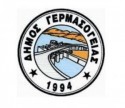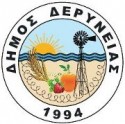Today, the Commission takes further steps in the Digital Decade agenda to strengthen Europe’s digital sovereignty, as announced by President Ursula von der Leyen in her State of the Union Address on Wednesday.
The Commission has proposed a new Regulation for the European High Performance Computing Joint Undertaking to maintain and advance Europe’s leading role in supercomputing and quantum computing. It will support research and innovation activities for new supercomputing technologies, systems and products, as well as foster the necessary skills to use the infrastructure and form the basis for a world-class ecosystem in Europe. The proposal would enable an investment of €8 billion in the next generation of supercomputers – a substantially larger budget compared to the current one.
Building on Europe’s success in next-generation high-performance computing, supercomputing will play a key role in Europe’s path towards recovery. It has been identified as a strategic investment priority, and will underpin the entire digital strategy, from big data analytics and artificial intelligence to cloud technologies and cybersecurity. In addition, in a Recommendation also adopted today, the Commission calls on Member States to boost ultra-fast network connectivity and develop a joint approach to 5G rollout.
Executive Vice-President for A Europe Fit for the Digital Age, Margrethe Vestager, said: “High-performance computing is an essential digital capacity for Europe. As we have seen in the fight against the coronavirus pandemic, supercomputers are already assisting in the search of therapies, recognising and forecasting the infection spread, or supporting decision-making on containment measures. Data, in combination with artificial intelligence and supercomputers, are also a major asset in detecting patterns of ecosystems, helping us to mitigate changes in climate, and to work on solutions to avoid disasters and fight climate change. Our proposal today will foster increased investment in supercomputing infrastructure, in view of its enormous potential to improve quality of life, boost industrial competitiveness, and advance science.”
Commissioner for Internal Market, Thierry Breton, added: “Together with data and connectivity, supercomputing is at the forefront of our digital sovereignty, encompassing industrial, technological and scientific challenges. Keeping up in the international technological race is a priority, and Europe has both the know-how and the political will to play a leading role. Our objective is to rapidly reach the next standard of computing with exascale computers – but also and foremost to already integrate quantum accelerators to develop hybrid machines and position Europe very early on this disruptive technology.”
The Regulation aims to update the previous Council Regulation that established the EuroHPC Joint Undertaking in October 2018. It will enable Europe to uphold a leading role in the technological race towards the next supercomputing frontier, notably:
- exascale supercomputers that will perform more than one billion billion (1018) operations per second;
- quantum computers and hybrid computers, combining elements of quantum and classical computing, that will be able to perform operations that no supercomputer is currently capable of doing.
The EuroHPC Joint Undertaking will make accessible existing European supercomputing and quantum computing resources to all users across Europe, including the public sector and industrial users, in particular small and medium businesses (SMEs), no matter where they are located. The new budget is currently under negotiation; it will be supported by Horizon Europe, Digital Europe and the Connecting Europe Facility.
Supercomputing in action
This supercomputing infrastructure could be used in more than 800 European scientific, industrial and public sector applications.
In the health sector, including in the fight against the coronavirus pandemic, supercomputers are already assisting in the search for therapies, modelling and forecasting the infection spread, and supporting decision-making on containment measures. In June, the EU-funded consortium Exscalate4CoV announced that an already registered generic drug used to treat osteoporosis, Raloxifene, could be an effective treatment for COVID-19 patients with mildly symptomatic infection. This drug is now ready to enter clinical trials, and the project is continuing to work on other promising molecules. Supercomputers will also help European scientists better understand the human metabolism and immune system, and will lead to substantial progress in areas like genomics, designing and testing of new drugs, and will help to fight major diseases, including cancer and viral infections.
Furthermore, this supercomputing infrastructure will help achieve the EU’s Destination Earth initiative, bringing about significant improvements in weather forecasting, urban and rural planning, waste and water management and oceanographic, marine and frozen environment modelling. This will support the green transition, in line with the goals of the European Green Deal, and assist in preparing for as well as managing major environmental degradation and disasters.
Next steps
The new regulation for the European High Performance Computing Joint Undertaking (EuroHPC Joint Undertaking) is proposed for adoption by the Council of the European Union. Preparations to continue the Joint Undertaking’s activities from 2021 onwards are already underway: for example, 20 projects have been selected to develop innovative HPC applications and services
Background
The EuroHPC Joint Undertaking was created in 2018 to enable the EU to become a world leader in supercomputing, by pooling the resources of the EU, participating countries (32 to date), and private partners.
Since its creation in 2018, the EuroHPC Joint Undertaking has been able to substantially increase investments in high performance computing at European level, in view of establishing Europe’s position as a global leader in this area. For the period 2019-2020 alone, the Joint Undertaking’s public investments will reach around €1.1 billion, representing a net increase of nearly €250 million per year at European level compared to the situation before 2018.
With this funding, by early 2021 the EuroHPC Joint Undertaking will deploy three pre-exascale systems (capable of at least 1017 calculations per second) that would rank in the world’s top five supercomputers, and five petascale systems (capable of at least 1015 calculations per second), in the top 50. These new machines will multiply by eight the supercomputing power available at European level. They will widen the use of high performance computing in the EU for both public and private users, and in particular for SMEs that do not have the in-house resources to profit from these new technologies.
The EuroHPC Joint Undertaking is also supporting the creation of 33 national competence centres that will act locally to ease access to European supercomputing opportunities in different industrial sectors, deliver tailored solutions for a wide variety of users, including SMEs) and ultimately strengthen European knowledge and expertise in these technologies.
For more information
Factsheet on the European Joint Undertaking on High Performance Computing
EuroHPC Joint Undertaking website
Press release on the main initiatives of the State of the Union 2020
Dedicated webpage on the State of the Union 2020
The European Commission is committed to personal data protection. Any personal data is processed in line with Regulation (EC) 2018/1725. All personal information processed by the Directorate-General for Communication / European Commission Representations is treated accordingly.





